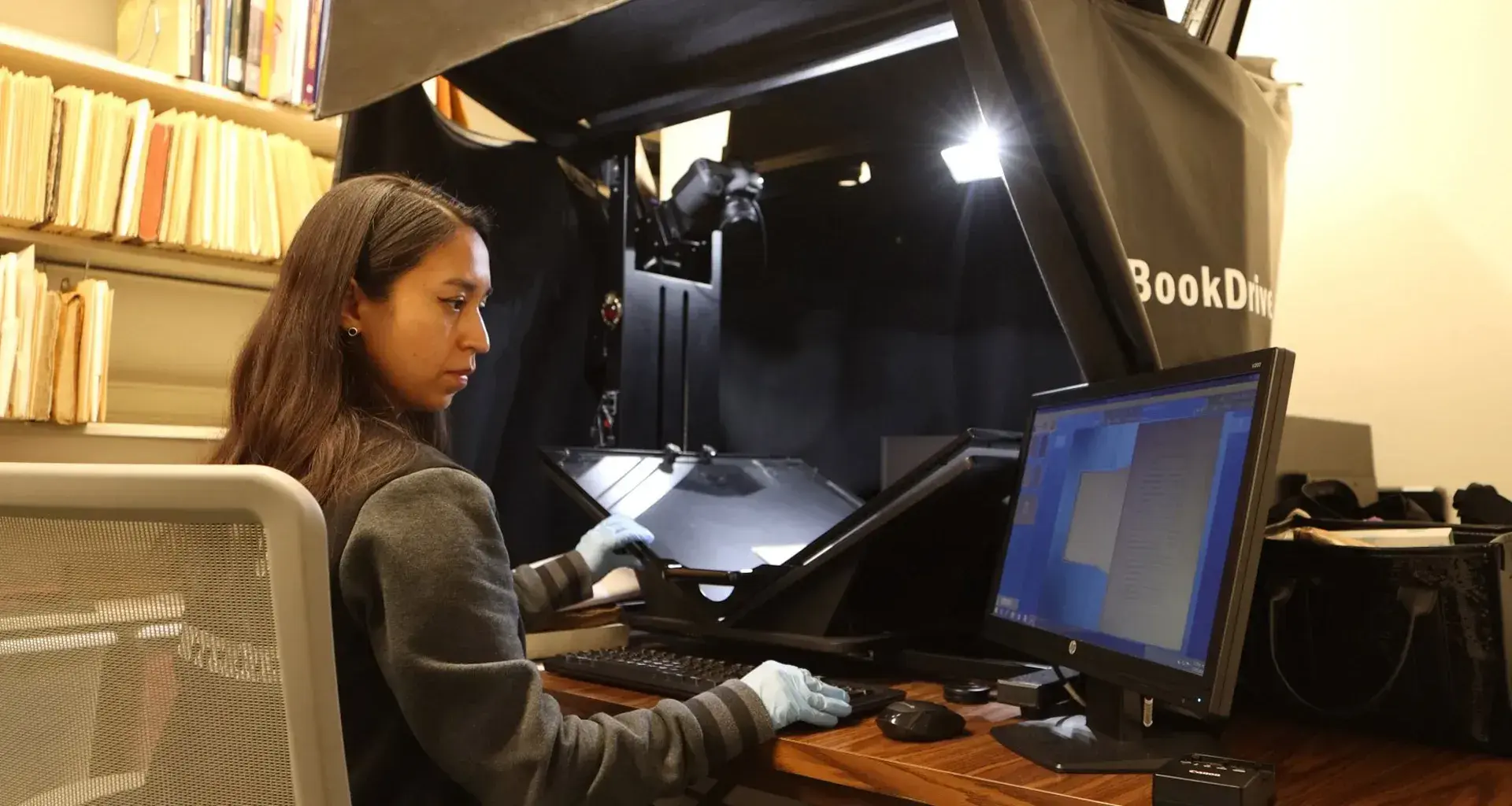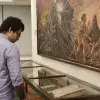The project to digitally preserve Tec de Monterrey’s cultural heritage has reached over one million images scannedfrom the works kept at the Monterrey, Mexico City, State of Mexico, and Zacatecas campuses.
Directors from the FEMSA Foundation, the donors behind this project, accompanied representatives from the Tecresponsible for expanding its digitized collections, at an exhibition in the Cervantine Library on Monterrey campus.
Ana Lucía Macías, current national director of Cultural Development of the Tec and manager of the project, highlighted the conclusion of the project, achieving one million and forty-eight million images catalogued, digitized and published from the collection of the campuses of Monterrey, Mexico City, Edo. de México and Zacatecas.
Copies of “Don Quixote ”, ranging from 1607 to the 19th century, as well as other elements of cultural heritage in a variety of formats are part of the works that add up to a total of 61,333 resources available to the public in (RITEC)
“It’s very representative and a source of pride to share a project that encompasses the sum of the wishes and efforts of Tecnológico de Monterrey, with the support of FEMSA,” said Lizette Saldívar, Director of Cultural Heritage at the Tec.
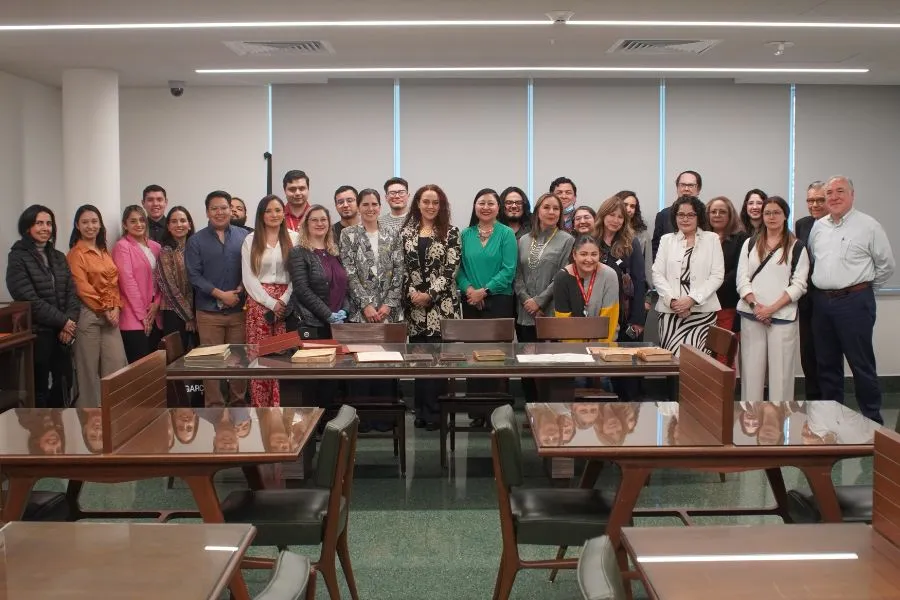
Expanding the number of digitized collections and archives
According to Saldívar, the cultural heritage kept by Tecnológico de Monterrey encompasses various types of collections, ranging from historical documents to works of art and photographic records.
Ana Lucía Macías, National Director of Cultural Development at the Tec, joined Marcela Beltrán, Director of the Cervantine Library, to break down some of the figures and notable documents within the digital collection.
“Last year, we concluded the project here in Monterrey, which is a source of great pride and enthusiasm for us (...) The project we launched consisted of one million images of heritage collections,” Macías explained.
“The art collection consists of 474 materials representing 1,649 images from the historical archive, with over 8,700 materials (...) The largest collection was from the Cervantine Library, where some materials are in physical format,” she added.
According to Macías, part of what contributed to this project was that previously there were 12,276 resourcesavailable to the public on the platform, whereas now there are 61,333 resources available.
“The entire collection of Don Quixotes from 1607 to the 19th century was digitized, including the first Mexican edition of 1833 (...) Everything we have from the 17th and early 18th centuries by Sor Juana Inés de la Cruz was also digitized,” Beltrán said.
“One important copy that’s here (in the Cervantine Library) in physical form is the first edition of the 1690 Carta Atenagórica, printed in Puebla by Diego Fernández de León, the best printer of his time,” she added.
The director of the Cervantine Library also highlighted the complete digitization of medical books, sermons, and the complete Ignacio Bernal collection, among others, which represents 88.8% of the digital project.
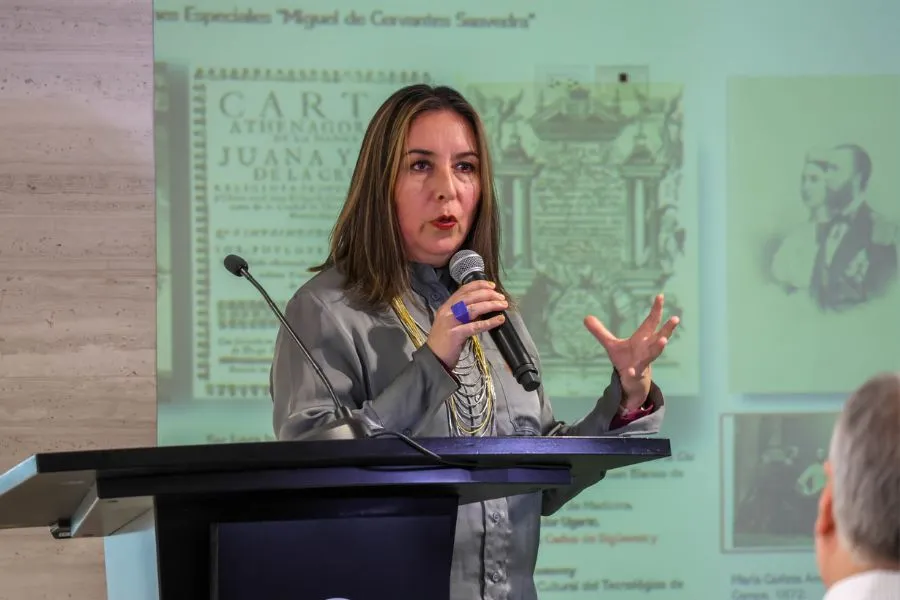
An effort that encourages research and reflection
For Macías, the diversity of digitized formats was a key aspect of this effort, as the project includes photographs, negatives, maps, engravings, and official documents with historical and academic relevance.
Zoraya Mabel Mauricio, Coordinator of the Real Caja de Zacatecas archive, reflected on the value of this digitization project beyond the aspect of cultural preservation, as in the case of the Historical Archive of the Real Caja de Zacatecas.
“This archive is unique because it recorded and administered the silver sent from New Spain to Spain in the 16th and 17th centuries,” the coordinator explained.
“Zacatecas was where everything was originally accounted for. It was administered and written there, and then copies were made to be sent to Spain (...) That’s what makes it unique and original because all this documentation originated in Zacatecas,” she pointed out.
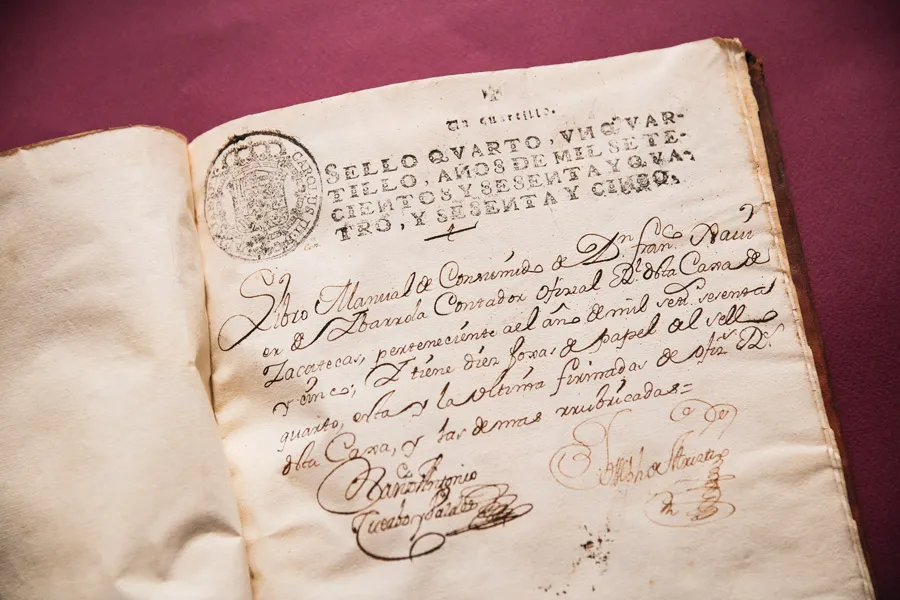
Now, as the coordinator explained, part of the material in this archive is also notable for its ability to transcend cultural boundaries due to its historical contribution to the visibility of less explored narratives.
According to Mauricio, throughout the 16th, 17th, and even 18th centuries, there is documentation (in the archive) of women in the mining industry in Zacatecas, which helps to broaden and validate a previously marginalized narrative in history.
“Whenever we talk about mining, we only talk about men (...) However, this shows us that there were indeed women, many women,” Mauricio explained about the value of preserving this archive.
“So, why was it so important to preserve this archive?” “Because we’re recovering an entire way of life from the 16th, 17th, 18th, 19th centuries, and the early 20th century (...) This isn’t just from Zacatecas, but from most of northern Mexico,” she pointed out.
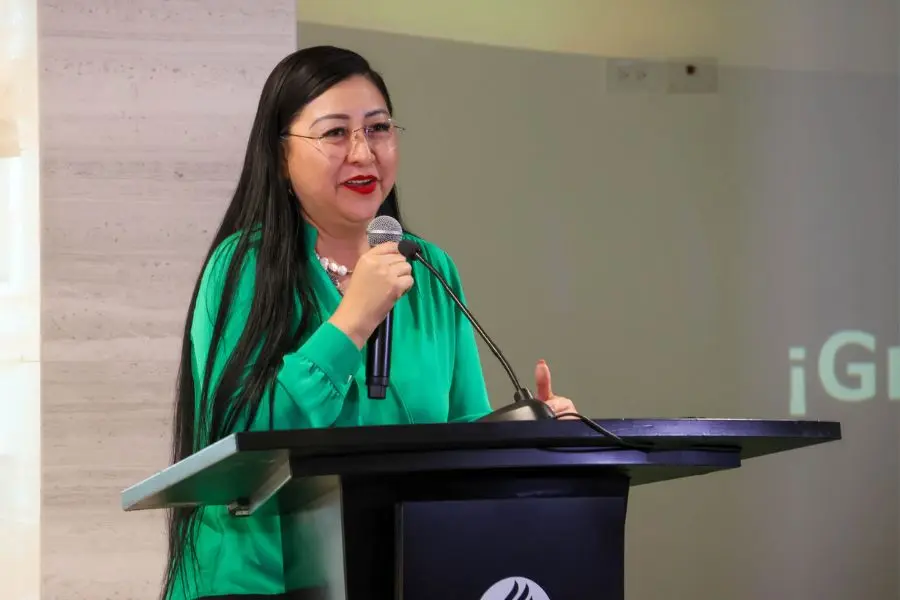
Digitization project encourages collaboration
Macías took the opportunity to applaud the collaboration created among the various stakeholders involved, highlighting the synergy established between the Cervantine Library and other elements to complete this phase of the process, such as:
- The School of Humanities and Education of the Tec de Monterrey (from where the project was managed)
- Cultural Heritage Team (National and Cervantine Library)
- Library Team
- Information Technology Team
- External suppliers for the digitization process.
“The intention, in addition to showcasing and thanking the entire team that participated, is to appreciate the different profiles that contributed to the project,” Macías said, highlighting how this diversity had a positive impact on the process.
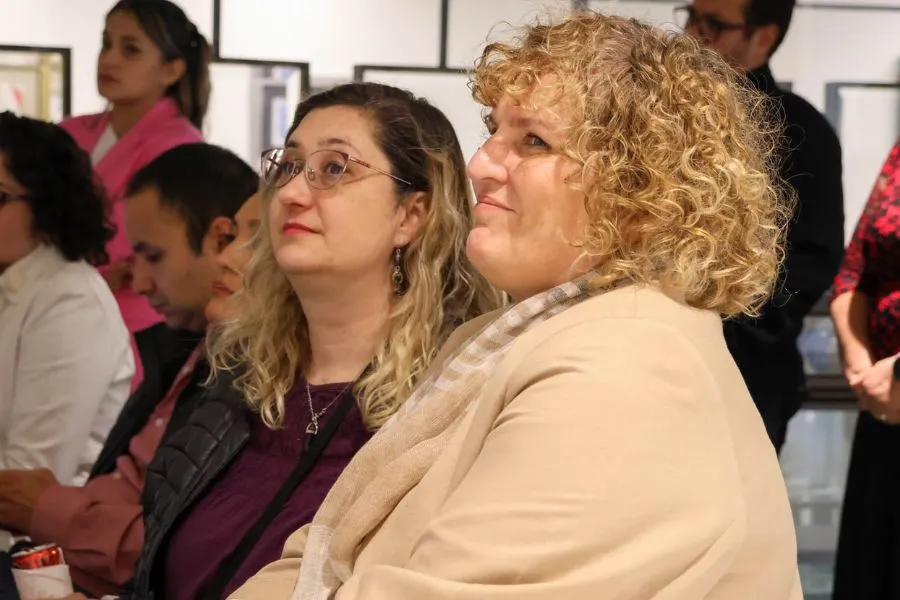
Among the special guests during the presentation in Monterrey were figures such as:
- Lorena Guillé, Director of FEMSA Foundation
- Luis Felipe Quirós, FEMSA Art and Culture
- Laura Pacheco, FEMSA Collection and Biennial
- Alfonso Alfaro, Arts of Mexico, member of the Advisory Council of the National Directorate of Cultural Development
- John Warren, George Washington University, member of the Advisory Council of the National Directorate of Cultural Development
- Judith Ruiz-Godoy, national dean of the School of Humanities and Education
- Inés Sáenz, Vice President of Inclusion, Social Impact and Sustainability of TecDev
Lorena Guillé, Director of the FEMSA Foundation and a Tec graduate, also highlighted how a key element in creating the bonds of this collaboration over the past three years was a shared love for preserving history.
“We feel very proud to be colleagues because it’s been three years of great dedication. We know what it means, and the effort involved (...) History keeps adding up and helps us interpret what’s coming ahead,” the Tec graduate said.
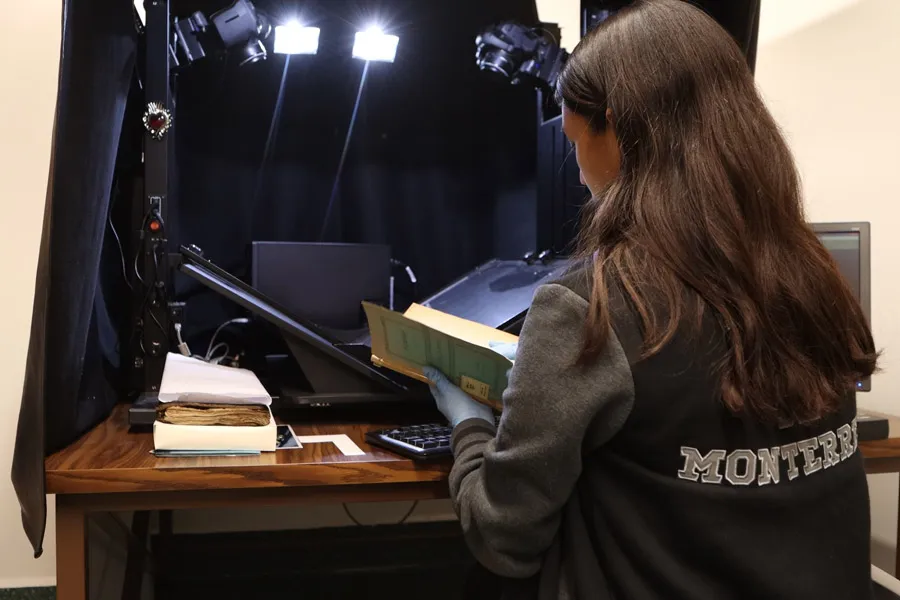
Impact and future steps for the digital collection
Having celebrated the achievements of this project, Saldívar recalled that the dissemination of the digital collectionhas been and continues to be a fundamental pillar of it, pointing out that public access allows for continued support in areas such as research.
“Since we began, we’ve asked ourselves: How can we provide access and foster research through these materials?” the Director of Cultural Heritage recalled about the experience.
“One of the main benefits of the project is its impact on academic research.” Thanks to digitization, the materials can be studied by experts without compromising the integrity of the originals,” she added.
Although the project has made significant progress in the digitization process, there is still work to be done, one aspect being the enrichment of metadata to improve information retrieval within the digital repository.
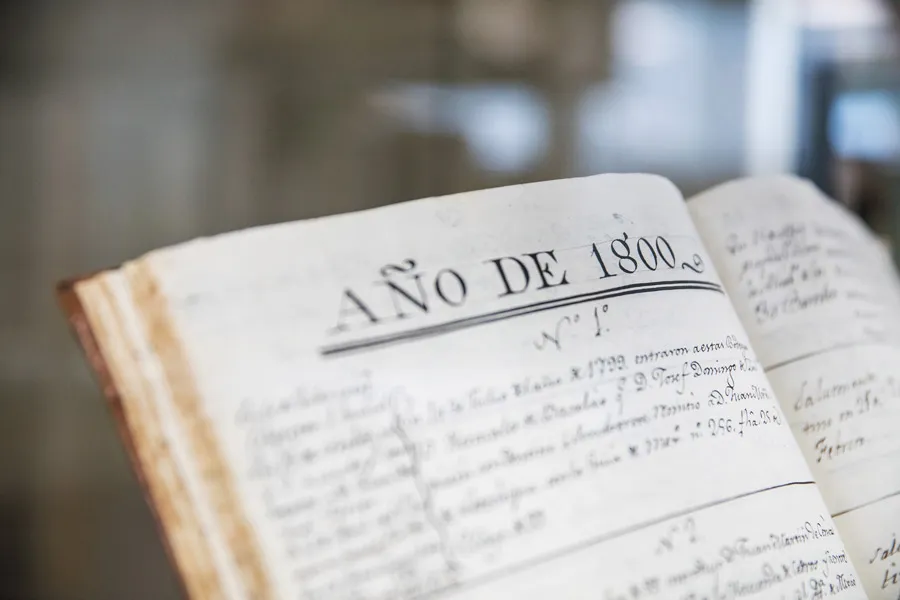
“The key for our users to be able to retrieve information is to have more enriched cataloging, so we’ll work on this (...) Better organization will allow more people to easily find the materials,” Macías said.
Another area of opportunity identified was the inclusion and dissemination of new collections. This includes goals such as preserving key material as part of Monterrey’s cultural heritage, such as a microfilm collection about northeastern Mexico.
“The task of preserving cultural heritage isn’t just our institution’s responsibility, but Mexico’s,” the Director stated.
“To preserve is to protect, conserve, care for, ensure, and perpetuate. It speaks about what is important to us and what we want to have in our future,” Saldívar concluded.
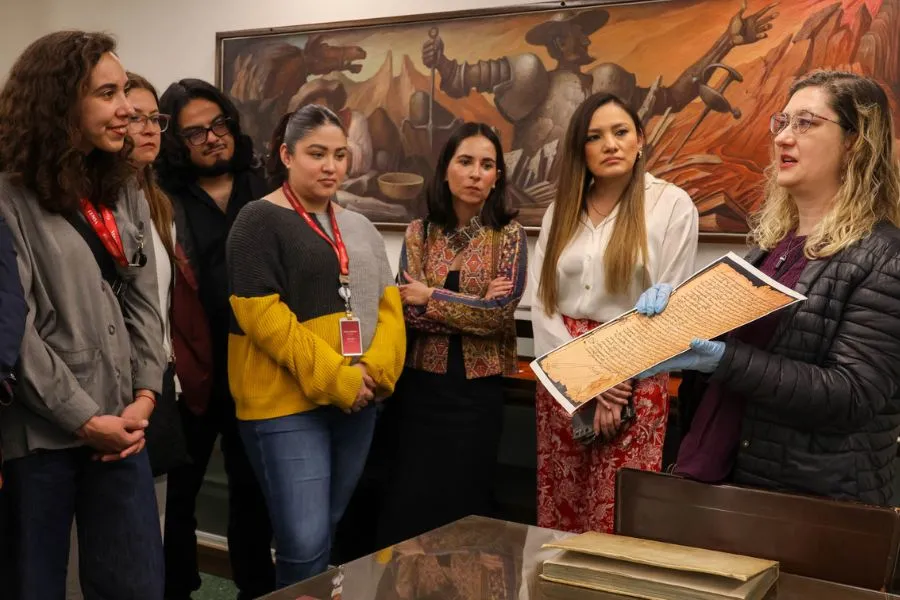
*The original title is “The Ingenious Gentleman Don Quixote of La Mancha,” by Miguel de Cervantes. Its first edition was published in 1605.
READ ALSO:

